You don’t think content marketing works because you’re doing it wrong. Here’s expert advice.
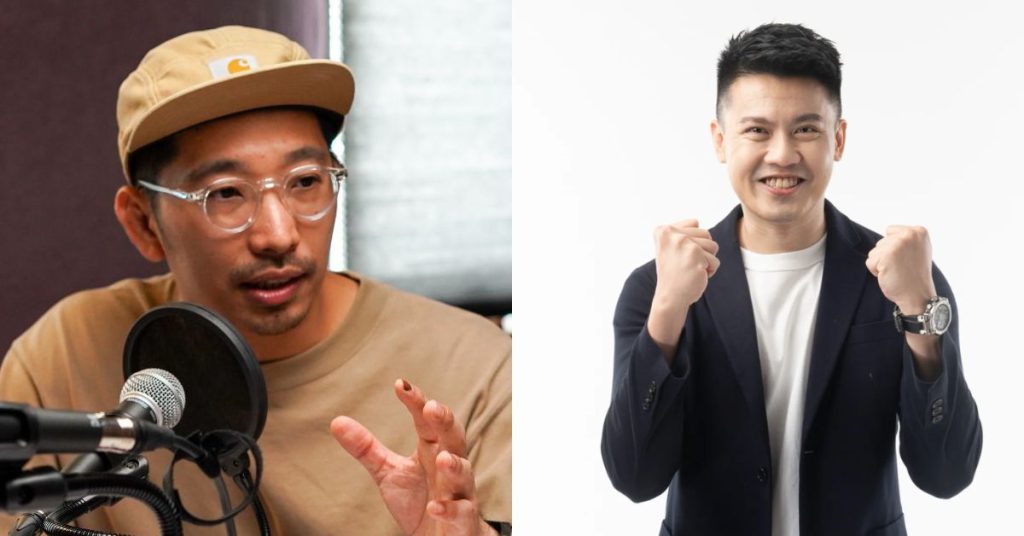
Original content. Authentic content. Real content.
You’ve probably been hearing these phrases thrown around social media recently. You’ve also seen the online presence of other businesses take off with these content marketing strategies, reflecting in their real-world demand too.
And you think, when will it be my turn?
The good news is that you don’t have to wait. There’s no perfect time to start creating such content, and in fact, the earlier you do it, the better. Heck, start before you’ve even launched your business.
That’s advice from myBurgerLab’s co-founder, RenYi, who spoke at Underdog Content Conference ‘24 by Daily CMO, along with other content marketing experts in their respective industries.
Here are 6 other pieces of advice for any business owner looking to get started on their own effective content marketing journey.
1. Start with a purpose
Why do you want to create content? What’s your end goal with the content?
RenYi advises not to create content for the sake of simply doing so.
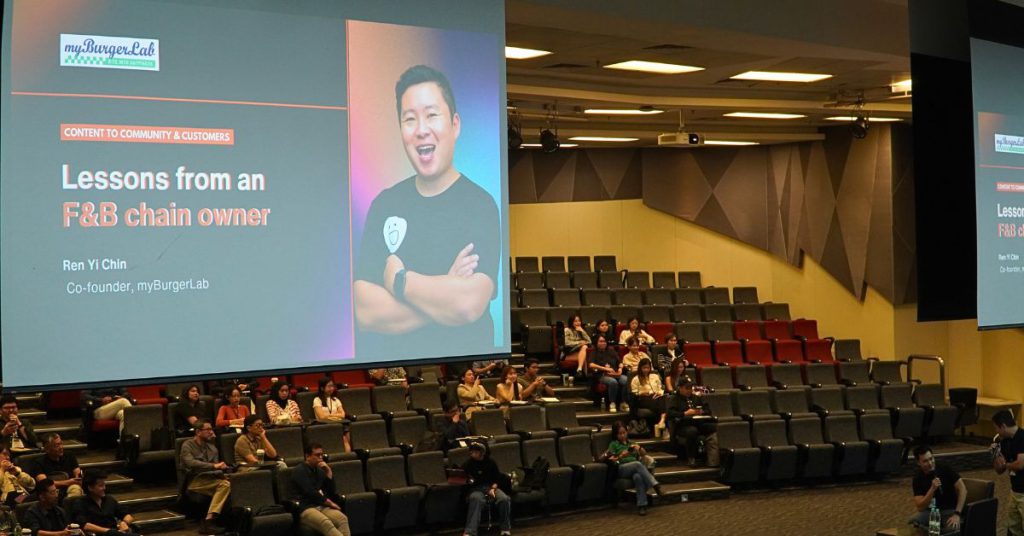
The lack of strong messaging might end up confusing customers and backfire, casting your brand in a negative light for creating what some of us may call “trash” (no value) content.
Instead, identify your goal, the audience you want to reach, the appropriate platform for your brand’s content, and then create your content.
If you need some ideas on where to start with all that…
2. Analyse your competitors
Content marketing is still part of business. And in business, competitor analysis can be the distinction between failure and success.
Mimi Thian—a freelance content creator herself who previously worked with Mindvalley and now also holds a Product Marketing Manager role at GXBank—advises to ask yourself these questions:
“What are other people in your line of business doing? What’s working for them? And can it work for you too?”
3. Take people behind the scenes
This is the “hot” thing right now, according to the experts at the conference.
People love feeling included. When you bring your customers behind the scenes, they’ll feel like they’re undertaking the journey with you.
They get invested in what happens, whether good or bad. They’ll celebrate your wins together, and give advice when you’re struggling.
It may be hard to see how this can translate into sales, but all these little things actually help customers build trust in your brand.
From there, they’ll naturally want to try the fruit of your efforts—be it a product or service—and if they like it, you’ve potentially got a loyal customer.
RenYi shared Grumpy Bagels as a good example of this.
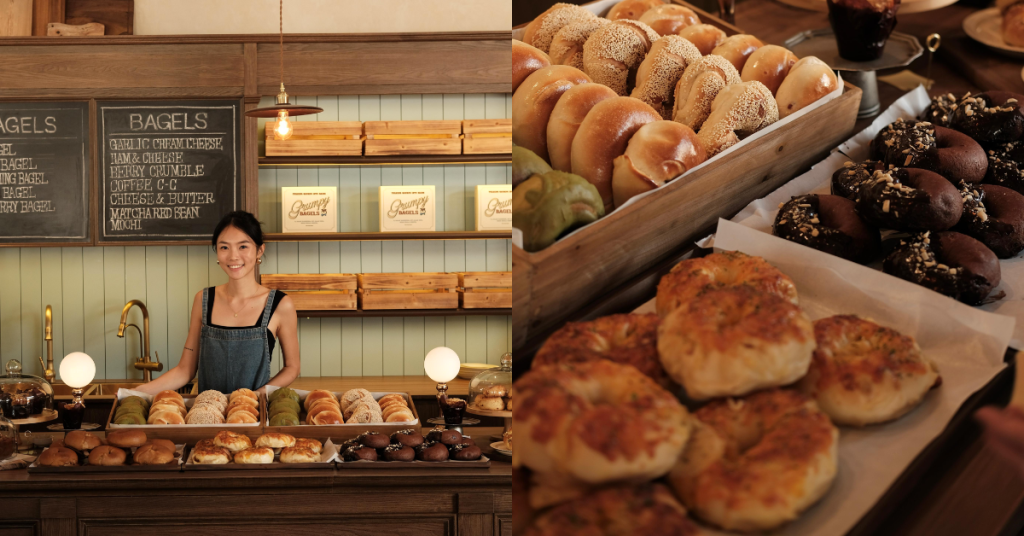
Claire, its founder, began sharing a series of cafe renovation videos to drum up interest in her brand, as she said that her store location isn’t a high-traffic one.
Once she launched Grumpy Bagels, she continued content marketing through a series of “Day in my life as a cafe owner” videos.
Months into the business, demand remains so high that Grumpy Bagels is still getting a 45-minute to one-hour queue, we’ve heard.
Now, when you’re creating your content, you also want to…
4. Be wary of sensitivities
For many brands, you might find that content marketing that’s more “candid” or “casual” in nature resonates with your audience best.
However, it’s still important to watch out for cultural or societal sensitivities. You don’t want your content marketing to unintentionally insult a certain community or group of people.
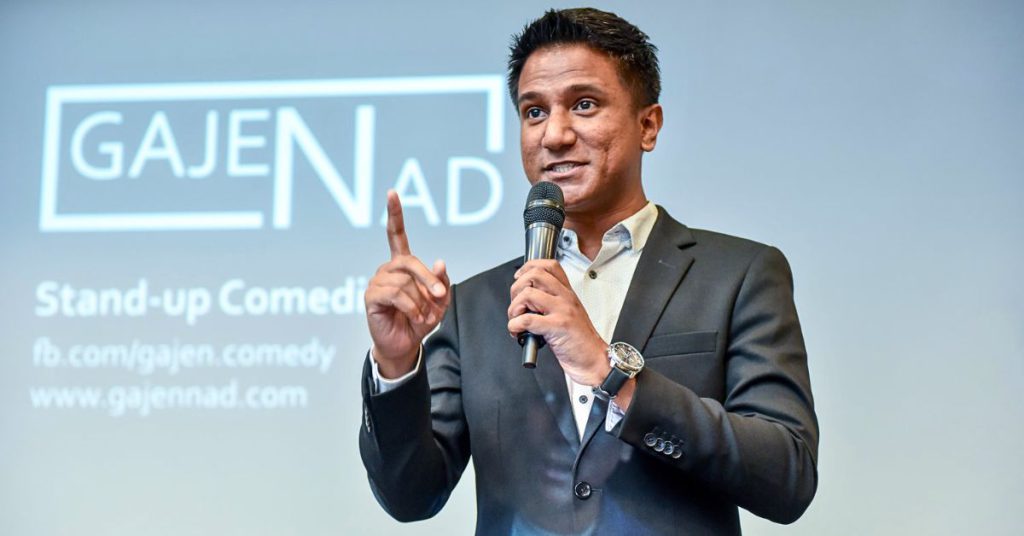
Gajen Nad, a popular comedian known for his family-friendly and clean brand of humour, shared six tips he uses to ensure that his content doesn’t rub people the wrong way.
- Have a positive intention behind what you create.
- Research your content topic and context (thoroughly).
- Exercise cultural awareness (having a diverse team helps with this).
- Test your content. Get feedback from people of various backgrounds.
- Avoid generalising (groups, nationalities, races, religions, etc.) and punching down.
- Avoid negative stereotypes.
With these guiding him and his own grit, he clinched his very own show on Netflix called ‘Professional Mixed Breed’.
5. Automate, automate, automate
Peter Yong, founder of Mr Money TV, an educational platform on all things money with over 180K YouTube subscribers, shared how his team efficiently creates impactful content.
“The two areas where you need true manpower are brainstorming and recording. Everything else should be automated,” he said.
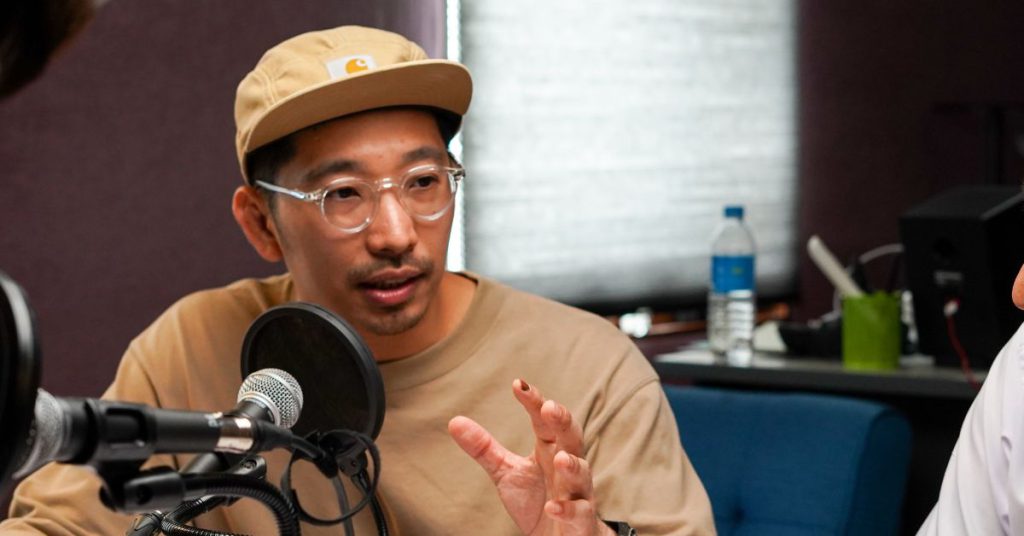
Similarly, Isaiah Saw, Senior Leader of Nuffnang Malaysia, and Weng Honn, a versatile content marketing expert with over 230K YouTube subscribers, pointed out that brands should leverage AI in the tools they already use.
For example, TikTok has its Script Generator tool, which will basically provide you with “scripts containing hook, body, and call-to-action scenes in seconds”.
So, with all these content marketing tips, you’re well on your way to crafting impactful content, but there’s one really important final step you shouldn’t ignore.
6. Do smart SEO
As good as your content may be, it’s not going to go far without the right SEO (search engine optimisation).
It’s important for businesses in general, as it allows your brand to be searchable and visible, but even more so if you want your content to be discoverable.
There are loads of blog posts and resources out there to give you the lowdown on how to leverage SEO, so here’s a relevant insight from Weng Honn on the subject matter.
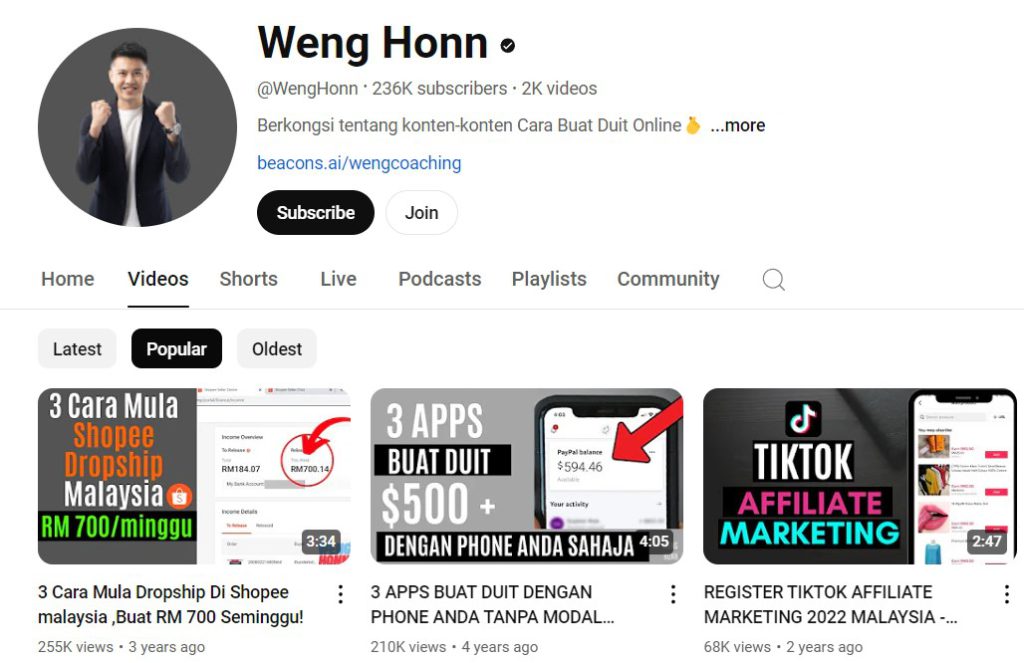
For one, don’t underestimate the importance of having good SEO even for video content.
Take TikTok for example again. Lots of people use its search bar as a way to discover new places, things to do, and more.
If you run a lobster restaurant in KL, you’ll want to make sure the location you’re in (KL, or if you’re in a popular building, get specific), what you serve (lobsters), and other identifying details of your business are keywords in your caption, hashtags, and more.
This way, your content will show up when someone inputs “lobster restaurant KL” into their TikTok search bar.
-//-
Hopefully, the tips shared by the experts here can give you the confidence to start your content marketing journey, or improve your processes.
If you want to brush up on the latest content marketing trends and best practices every so often, then definitely keep an eye on Daily CMO too, a platform to help anyone become better marketers and the organiser of the Underdog Content Conferences.
- Read more about content marketing here.
Also Read: Explore Malaysia’s future in biotech, hydrogen & spacetech at this KL summit on August 12-13
Featured Image Credit: Mr Money TV / Daily CMO
“We benefitted from it in some way”: Carsome CEO talks about their rivalry with Carro
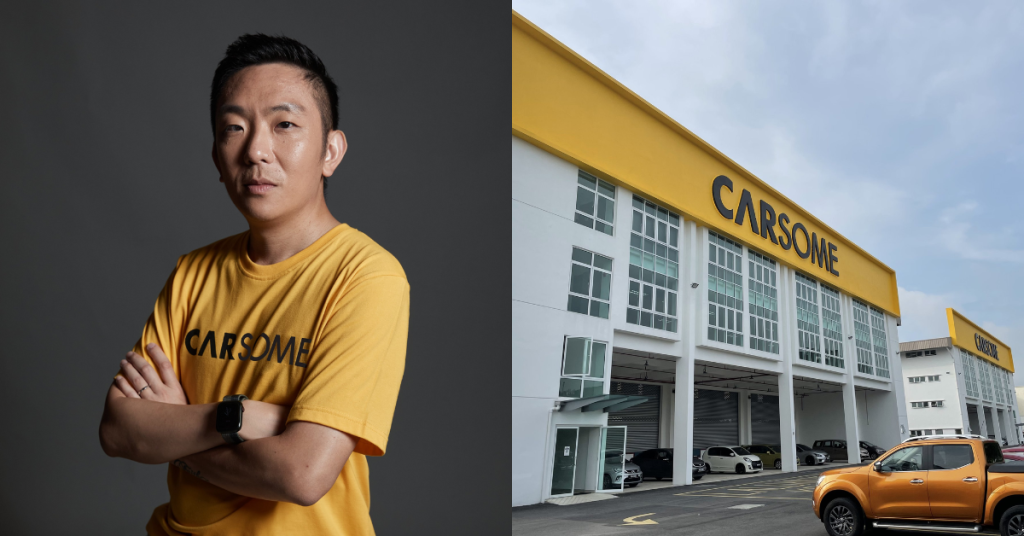
Competition is fierce when it comes to the used car marketplace, and two major players in the Southeast Asia region are Carsome and Carro.
Both operate in the same used-car space. Both companies were founded in 2015. Both are considered unicorn startups with Singapore-headquartered Carro reportedly surpassing the billion-dollar valuation mark in June 2021. Later that year, Carsome had become Malaysia’s first unicorn.
During a fireside chat at the Tech in Asia Conference 2024 in Kuala Lumpur, Carsome’s Eric Cheng was asked by Tech in Asia’s CEO Willis Wee about his stance on the competition between his startup and Aaron Tan’s Carro.
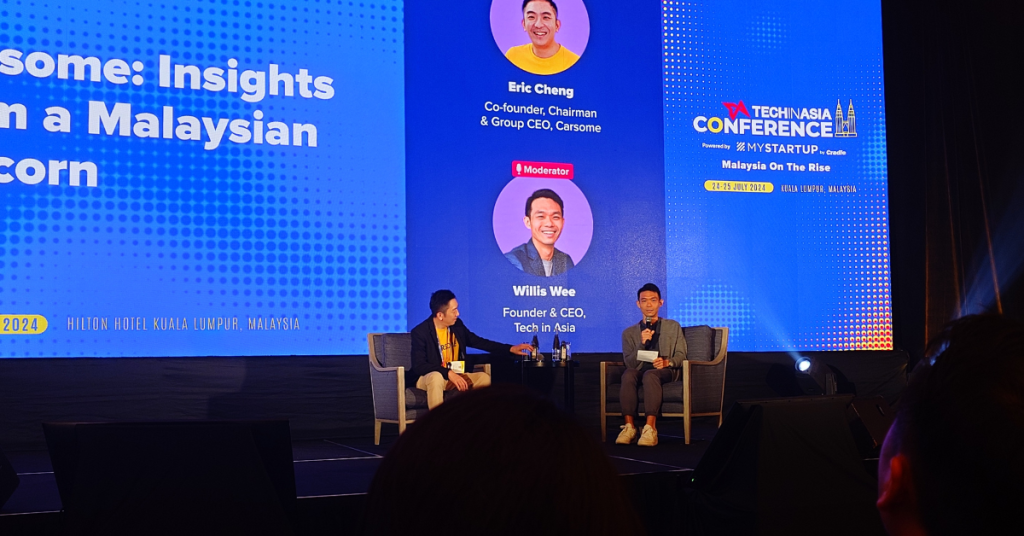
“You’re a little more zen about competition,” Willis commented. “I want to ask, what is your approach when it comes to very fierce competition in Southeast Asia?”
Here’s what Eric had to share on the matter.
Focus on yourself
Although some might consider it to be a cop-out answer, Eric shared that instead of competing with others such as Carro, he’s more concerned about running his business.
“As long as we do our business, we run it well, then we don’t really have to worry too much about competition,” he shared.
However, oftentimes, investors may be overly concerned about competition, whether that be getting ahead of the curve or quashing competition entirely.
To that, Carsome’s CEO said, “At the end of the day, you don’t serve the investors. Yes, you have a board to report to, you have investors who invest to see the promise that you made at the very beginning. But at the end of the day, it’s the customers who you serve.”
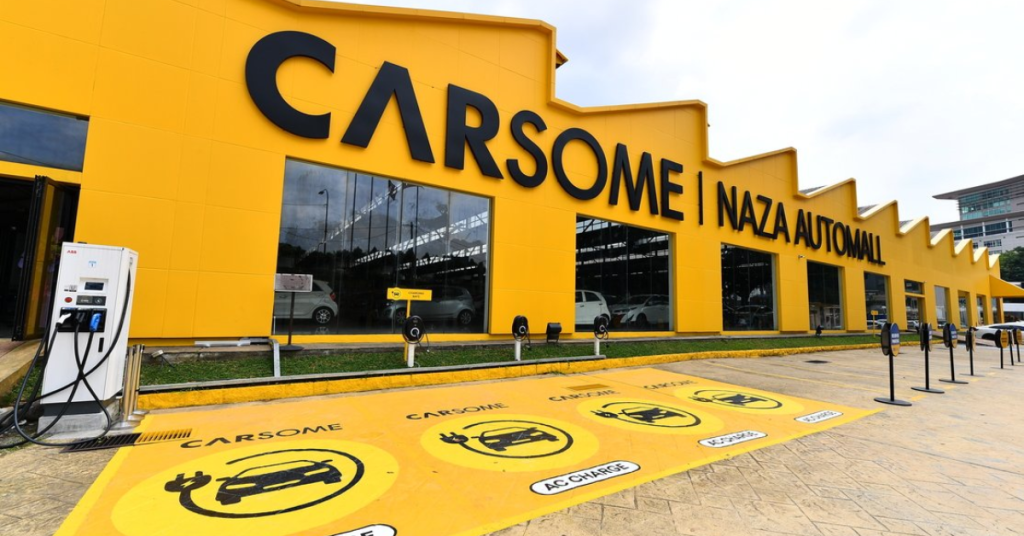
So, that’s always been the focus, Eric said.
At this point in time, Carsome has been around for nine years. There are many startups that have tried to enter the space, and also those who came before them.
“But coming to today, a lot of them are not around anymore, or not really worth mentioning,” Eric admitted. “I think that’s really just an endorsement towards what we have been doing.”
Carsome’s CEO said that his style when it comes to maintaining a competitive edge is to just set a very high standard, and make sure that everyone lives up to it.
Negative PR is still PR
Over the years, Carro and Carsome have been positioned as rivals who are going head-to-head, Eric recognised.
During the conference, he said that he actually finds it to be good for media exposure.
“You look around in Southeast Asia, and there’s not many companies with this size, where you can have this conversation,” he mused.
He continued, “Which company doesn’t have negative PR? There’s always some negative PR here and there.”
But as a company that has been receiving this “negative PR”, yet continues to hold strong, Eric thinks Carsome (and by extension, Carro) has actually benefitted from the conversation.
In any case, he believes that Carro’s success would be a good indicator for Carsome.
For example, both companies are somewhat poised to list on the public market. If Carro—or other competitors—were to list, the Carsome team wouldn’t want to see it fail. Rather, their success would mean that the company coming after can follow their path.
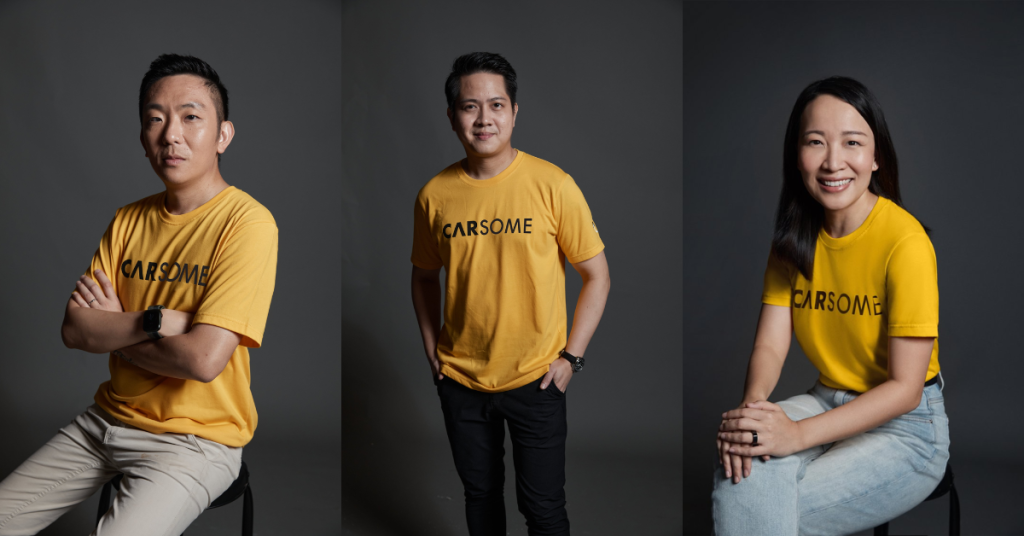
If they did badly on the first listing, it’s a lot more work and due diligence that Carsome would have to do before listing.
Moreover, he believes that the success would be a good story for Southeast Asia overall.
As Eric put it, “It’s not a race.”
On joining hands with a competitor
At one point, Willis asked a hypothetical question to Eric on whether Carsome would ever merge with Carro to go for a bigger listing.
“Nothing is impossible, right?” Eric laughed. “That could be an interesting scenario.”
He admitted that it’s not something that hasn’t crossed his mind before. However, an important question to ask here is, what are the synergies you want reflected?
“Is it one plus one equals three, or one plus one equals 0.5 in terms of efficiencies?” he wondered.
Essentially, merging shouldn’t just be about creating a bigger number together, but whether there’s a multiplier effect.
Ultimately, Eric believes a serious conversation on this can only be made when the companies are in a comfortable position to logically and rationally make decisions, rather than being forced into it as a last resort.
Also Read: This agritech solution by UiTM & TechnoDex aims to boost food security & empower B40 farmers
Featured Image Credit: Carsome
The art of letting go: Ex-CEO of Fave Joel Neoh opens up about exiting a company
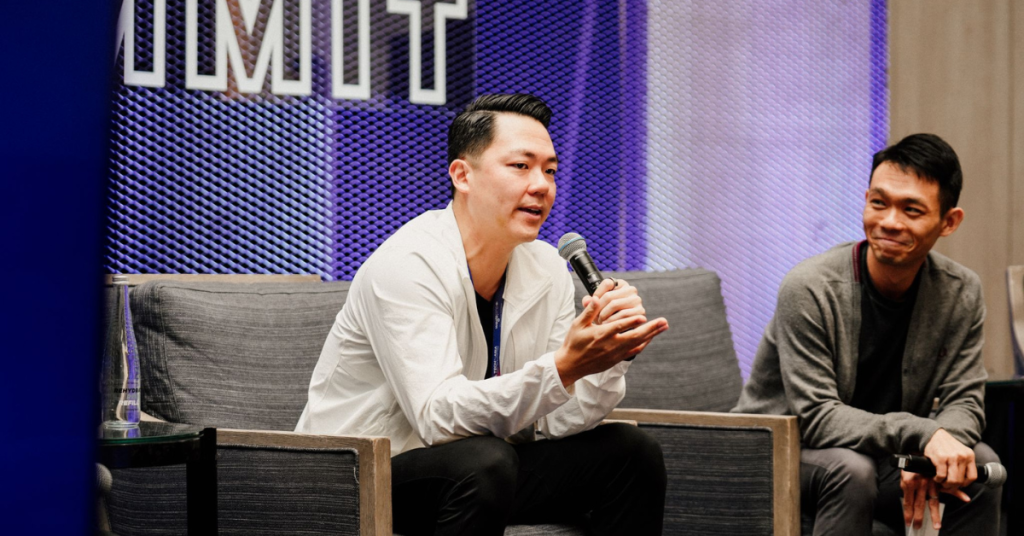
As a founder, there will come a time when you’ll have to choose—do you stay on with the company or do you take a step back and let go?
It’s not an easy decision to make. This is your baby we’re talking about, a venture that you nurtured and built from the ground up. So where do you go from here?
Serial entrepreneur Joel Neoh, co-founder and ex-CEO of Fave, was left stumped with the same question not too long ago.
“[I] felt disappointment,” he shared candidly to the audience at a talk during Malaysia’s inaugural Tech in Asia Conference. “We don’t really plan the exit. Like relationships, you don’t think of breakups or divorce. You don’t think of selling [the company] when you start, that’s never the case.”
But a series of events led him to eventually exit Fave.
Trust your gut to lead you to the right path
At the time, one of his close friends (who was only 37 years old) had passed away. He had dedicated his whole life to running his company only to leave the world too soon. Joel’s romantic relationship back then also just fell through which left him in a quiet slump of sorts.
“With Chen Chow, we had been building this company (Fave) [for eight years] and then now the dynamic is quite different. For the company to be successful, it was almost probably like I needed to exit the leadership team.”
Joel likened it to building a basketball team but then the sport changed. Instead of shooting hoops, you’re now asked to score goals in football. It’s similar to how older and more traditional businesses have had to adapt to modern technology.
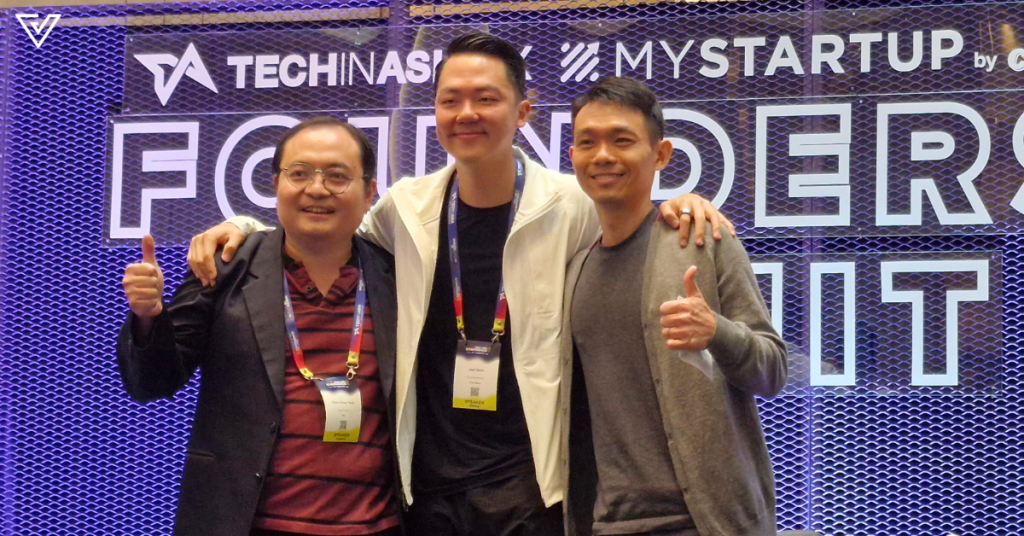
“So you kind of tell all your team members who built this company over the past eight years to restart a new journey,” he said. That’s what some other startup founders do to keep up with the times.
Not Joel, though. He explained that he didn’t have it in him to do this back then and trusted his gut feeling that it was time to go. “I just didn’t have the emotional capacity and drive.”
So he and a few others left the team, while Fave’s other co-founder, Chen Chow, stayed on.
Don’t shy away from the emotional rollercoaster ride
Similar to how your heart feels heavy to leave a long-term relationship, so too is the case with exiting a startup. You’ve poured your heart, sweat, and tears into building up this one venture. Not to mention the many sleepless nights you sacrificed for it.
Yet, it doesn’t have to be a sad ending.
Sure, there are tangible things you’ll be leaving behind, like a good income, company benefits, and social status (if you care for those things). But those are rather self-serving reasons to stay.
To get out of that mindset, you need to really understand your role in the company.
According to Joel, there are two types of founders:
- People who feel like the company is an extension of themselves
- People who feel like the company has a life of its own
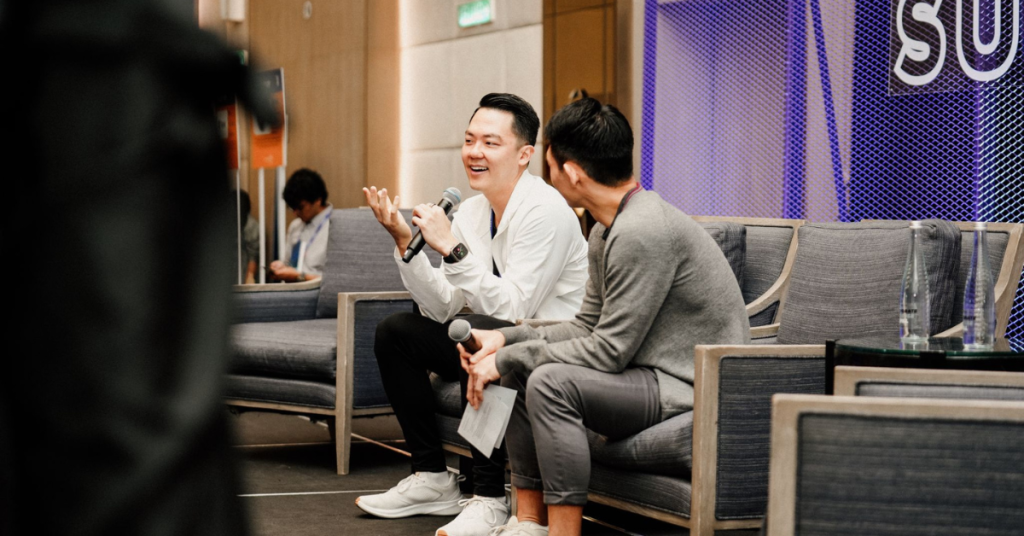
He falls under the latter category and finds that a company has its own mission. This is something that’s typically set by the founding team when first starting the business. More likely than not, though, it will evolve and change over time.
And when it does, you have to be honest with yourself about your abilities to help reach those goals.
“In my personal capacity, there’s only so much I can actually give,” Joel shared. “Over time, if I were to stay longer, I’d actually be a liability to the company. Because I’m just going to sit there, I’m not going to change the leadership. I’m going to be maybe unhappy.”
Eventually, this could affect the company’s long-term prospects as there’s a lack of growth and innovation.
This brings us to our last point…
You need to properly plan for your departure
It’s easy to say that your exit is the right choice for the company you’ve built. But that’s only true if you take the necessary steps to ensure that you’re leaving it in a good state.
And the only way to do that is to plan for your departure. How? By putting the right people in the right places.
For Fave, this was by not placing Chen Chow as Joel’s replacement for the role of CEO.
“We’re very different people,” Chen Chow said during an impromptu drop-in during the talk. Joel’s the visionary and big-picture person, while Chen Chow’s the planner, executor, and is more operation-focused.
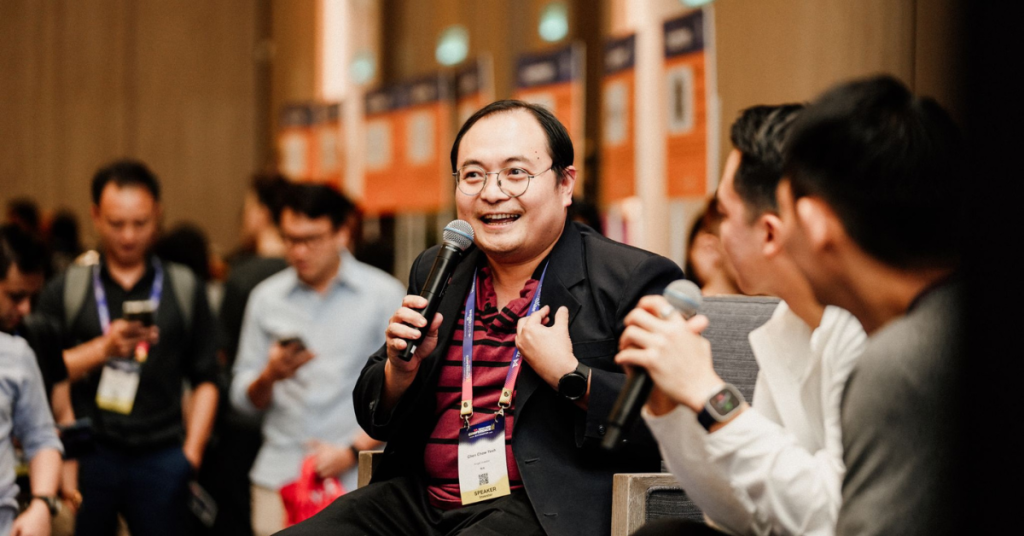
In other words, the two of them complement each other’s strengths and weaknesses. But with Joel gone, they needed to find the right person to fill in the shoes left behind.
“I told him (Joel) I can’t replace him. I’m not that leader,” Chen Chow candidly shared. “I would stay where I was [as Fave’s COO] and Joel thought Amrish Rau was a good CEO to lead. Because if he puts me as the leader, I’m going to fail the company.”
This arrangement turned out to be a suitable fit until Chen Chow himself left Fave just recently on June 30, 2024.
When one door closes…
All that said, exiting a company does not signal the end of your journey as a founder. It’s simply a new chapter in your life and gives you the opportunity to widen your horizons again.
Maybe you’ll be like Joel and launch another startup that’s more aligned with your current passions. In his case, it’s First Move, an early-stage venture capital firm.
Or if you’re unsure, perhaps this would be the perfect time to take that long overdue vacation you’ve been putting off and reflect on what you want to do next. Either way, the world is your oyster.
- Read other articles we’ve written about Malaysian startups here.
Also Read: You don’t think website building is worth RM100K until you know what this M’sian team can do
Featured Image Credit: MYStartup
ZUS, Flash & Kenangan: How these 3 SEA tech-driven startups are disrupting the coffee scene
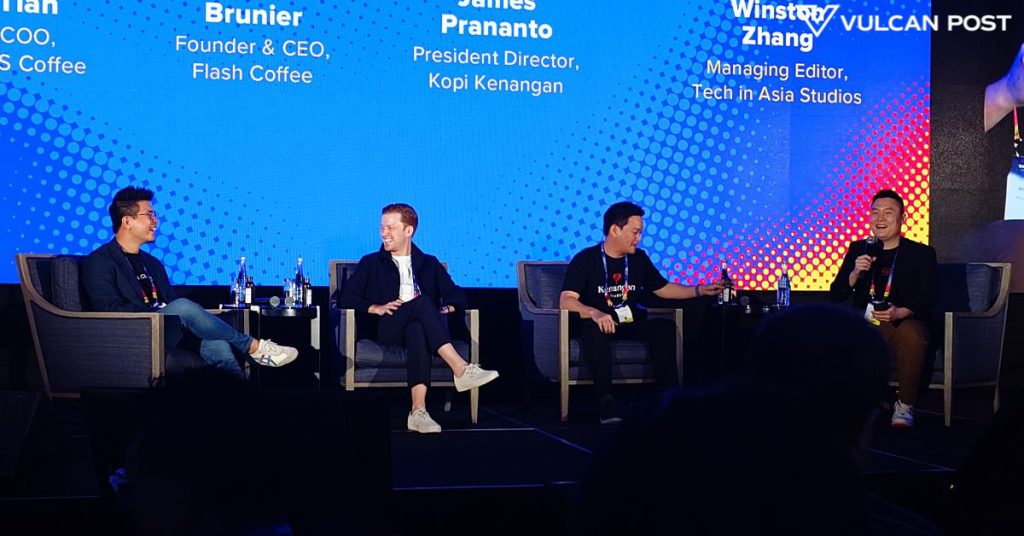
The local coffee scene is experiencing a surge, thanks to tech-savvy startups like ZUS Coffee, Flash Coffee, and Kopi Kenangan.
These brands are not just serving up caffeine; they’re redefining the coffee experience through technology and innovation in the Southeast Asia market.
Recognising a gap in the market
The idea for these startups emerged from a noticeable gap in the market.
On one hand, there were convenience store coffees, offering quick, affordable options. On the other, premium coffee chains provided a more upscale experience. However, there was a void for high-quality coffee at accessible prices.
“We saw a market for good quality coffee at an affordable price,” said ZUS Coffee COO Venon Tian during a panel at the Tech in Asia Conference 2024.
“There were many independent coffee shops, but no single chain offering consistent quality and accessibility.”
Flash Coffee CEO David Brunier points out the massive market potential in the Asia-Pacific (APAC) region. With roughly 100 stores in Indonesia and Thailand, Flash Coffee is tapping into a high-growth market with a significant opportunity for expansion.
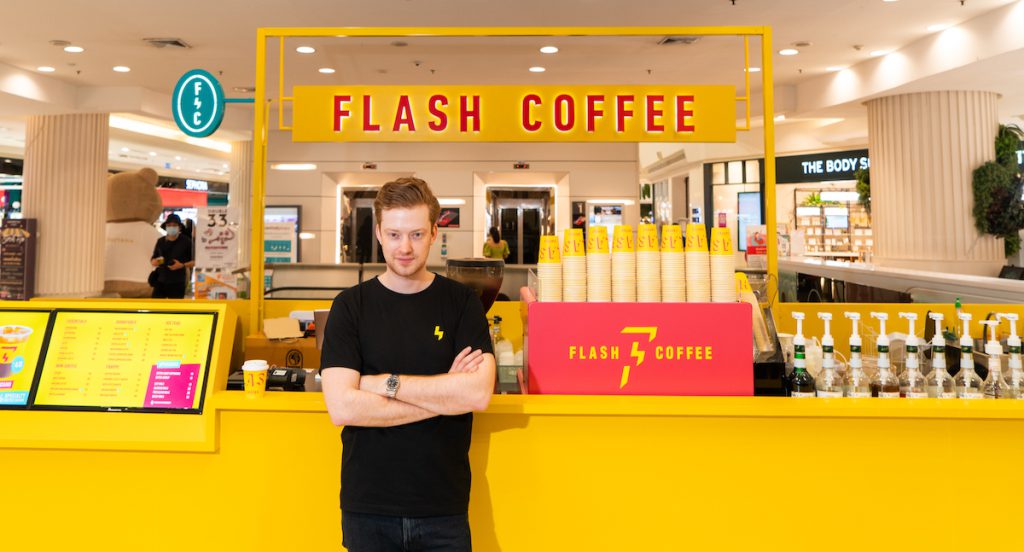
David noted, “The average coffee consumption per capita here is still far from maturity compared to Europe or the United States, which means there’s a huge opportunity for growth.”
Leveraging technology
Technology has been a game-changer for these startups. Mobile apps allow customers to order ahead, skip queues, and earn rewards. However, the benefits extend beyond customer convenience.
“Technology helps us understand our customers better,” explained Venon. “We can track purchasing behaviour, location, and preferences to tailor our offerings and marketing efforts.”
David also added that Flash Coffee uses technology to enhance the customer experience and streamline operations, ensuring efficiency and profitability.
He emphasised the importance of understanding and reaching customers through data-driven approaches, enabling personalised marketing and improved customer retention.
Echoing the same sentiment, Kopi Kenangan leverages technology to enhance both customer and operational experiences. For instance, they have a dedicated system which helps baristas order raw materials efficiently, reducing mistakes and waste.
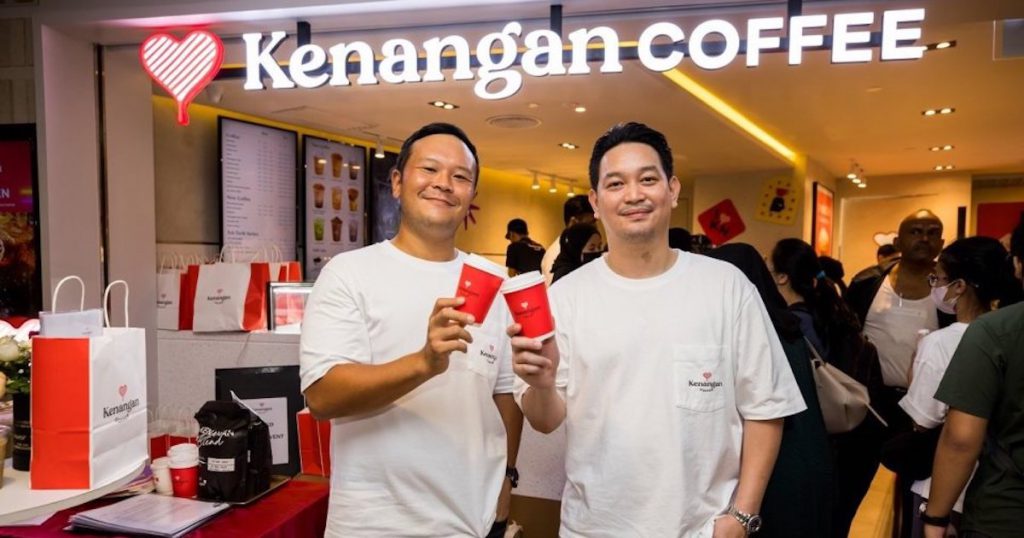
James Prananto, co-founder of Kopi Kenanagan, said they also use digital tools for store reporting and maintenance, ensuring smooth operations. Additionally, their app increases customer engagement by encouraging repeat visits and larger purchases.
The importance of localisation
While technology is a crucial tool, these startups agree that product quality and customer experience are paramount. Hence, all these three companies stressed the importance of localisation when expanding to other regions.
“We’re constantly innovating our menu. Understanding and meeting customer preferences is key to driving sales and loyalty,” David shared during the talk.
James highlighted the importance of localisation. “We adapt our products to suit local tastes while maintaining our brand identity. Hiring local teams helps us understand the market better.”
He shared that Kopi Kenangan’s hero product, Kenangan Latte, features a unique blend of milk, palm sugar, and special creamer, catering to local preferences.
Meanwhile, Venon mentioned that ZUS Coffee adapts its menu to local tastes, introducing flavours that resonate with each market. For example, in the Philippines, they launched an Ube series, a local favourite.
The role of store design
In terms of store design, ZUS Coffee and Kopi Kenangan prioritise efficiency and accessibility.
Maintaining the focus on efficiency, Venon said, “Our model is not a traditional third space model. We prioritise operational efficiency over extensive seating areas.”
“We want to be the go-to coffee shop for everyone. Our brand is about enjoying great coffee without breaking the bank,” he said.
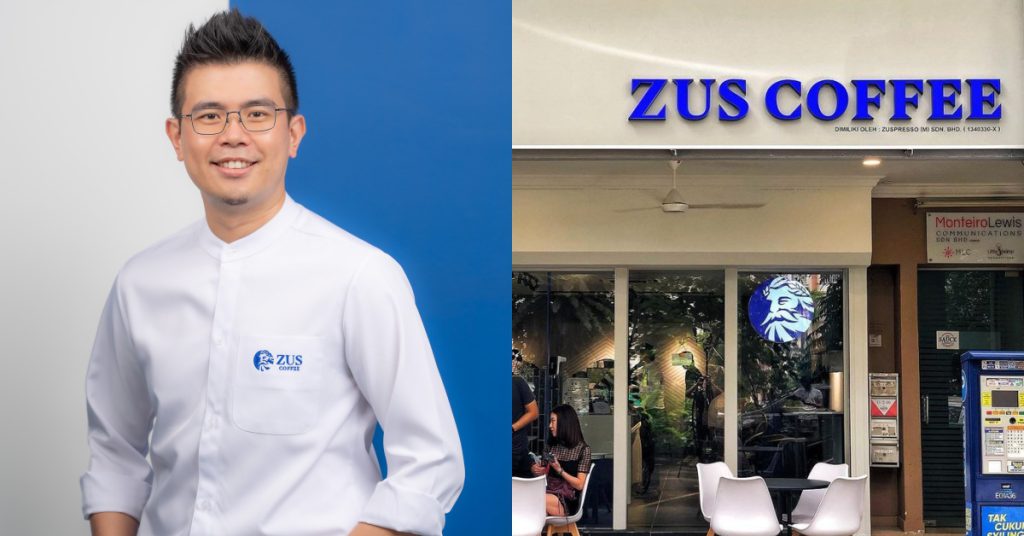
James agreed, saying, “Our stores have evolved from small kiosks to more comfortable spaces. We want customers to enjoy their coffee and have a pleasant experience.”
However, David is taking the traditional route of offering a pleasant surprise to its customers.
“We used to have very small stores, but we realised that customers also appreciate a space to relax,” he said. “We’re now opening larger stores with more seating and amenities.”
Challenges and opportunities
While the coffee market presents significant opportunities, these startups also face challenges. Competition is increasing, and consumer preferences are constantly evolving.
“The key is to stay agile and adapt to changing market conditions,” said Venon. “We need to continuously innovate and improve our offerings.”
David added, “Building a strong brand and cultivating customer loyalty is essential. We must focus on providing exceptional customer experiences.”
James emphasised the importance of talent acquisition. “Finding and retaining skilled employees is a challenge. We invest in training and development to build a strong team.”
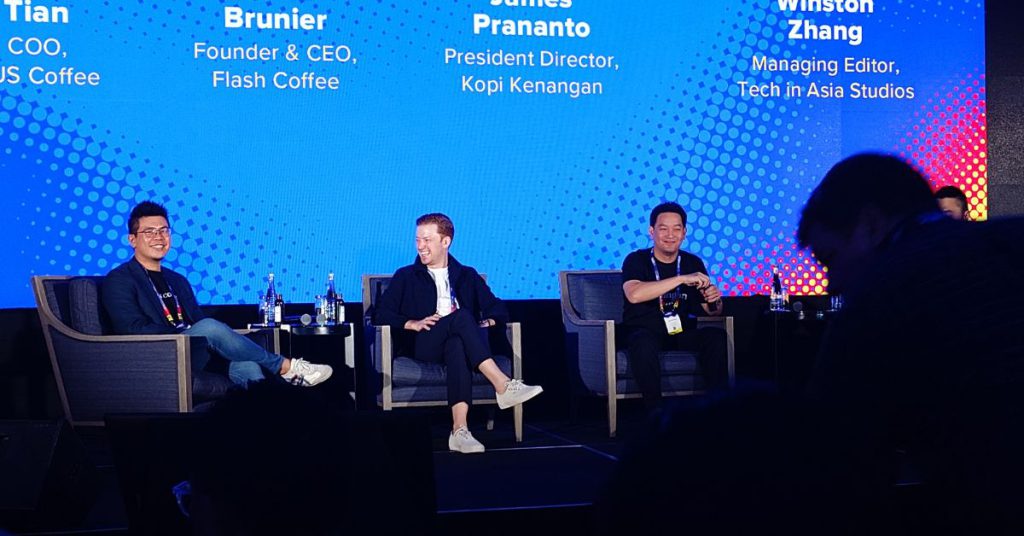
What’s next for these startups
With the coffee market still growing, these startups have ambitious plans. Kopi Kenangan is expanding its reach with a more affordable brand, Satu Kenangan, targeting a wider market segment.
ZUS is focusing on strengthening its position in Malaysia and exploring new verticals. Flash Coffee is expanding its store size to offer a more complete brand experience while maintaining its grab-and-go focus.
All three companies are exploring ways to reduce reliance on human labour through automation and technology. Additionally, they are considering international expansion, particularly in Southeast Asia.
The future of the coffee industry looks bright, with these tech-driven startups leading the charge. By combining quality products, innovative technology, and a deep understanding of their customers, they are shaping the future of coffee consumption.
As the market continues to evolve, these startups will play a crucial role in determining the trends and preferences of coffee lovers. Their success will likely inspire other entrepreneurs to enter the industry too, leading to even more innovation and competition, and ultimately, better choices for us consumers.
- Learn more about Tech in Asia Conference 2024 here.
- Read other articles we’ve written about Malaysian startups here.
Also Read: Meet the startup that powers the backbone operations of over 7K M’sian F&B outlets
Featured Image Credit: Vulcan Post
S’pore is going nuclear: gets 30-year access to US technologies, preparing for future use

Yesterday, Singapore and the USA signed a nuclear cooperation deal that will give the city-state access to the latest developments in nuclear technologies for civilian applications. These technologies may one day be deployed to provide power on the island as it seeks to move away from fossil fuels.
The 123 Agreement, as it’s called, was signed by US Secretary of State, Anthony Blinken, and Singapore’s Minister for Foreign Affairs, Dr Vivian Balakrishnan, during the former’s visit on July 31st.
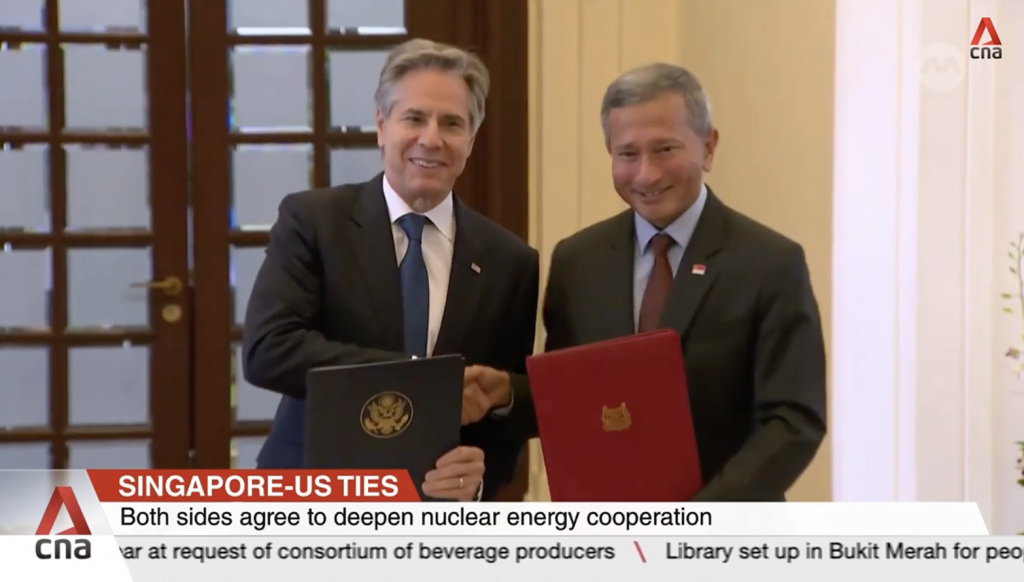
The agreement still needs to be approved by the US Congress, which is expected to happen by the end of 2024. Upon entry into force, it will provide Singapore with details of American technologies and scientific research, which are under export controls.
It will also permit cooperation with other countries which use American intellectual property.
No plans for deployment yet
This is just a first step in a long journey to Singapore’s first nuclear reactors. As noted by min. Balakrishnan:
“Current conventional nuclear technologies are not suitable for Singapore. But given advances in civil nuclear technology, we need to stay abreast of breakthroughs in this rapidly evolving field.”
Small modular reactors are one area of promise, as they are smaller, considerably safer, and require much-reduced buffer zones than current nuclear power plants. This would make them suitable for a densely populated island with very little land.
It’s worth remembering that replacing natural gas with nuclear power for electricity generation in Singapore is not new, and various proposals have been studied over at least the past two decades.
Power plant at Pedra Branca?
In 2008 this seemingly implausible idea was put forward by none other than Lee Kuan Yew himself. Facing not only growing environmental concerns but also over-reliance on gas piped over from Malaysia, which created a strategic vulnerability, he suggested placing a nuclear plant on Pedra Branca, safely away from Singapore’s mainland.
“The real alternative, that can produce the electricity generation to match oil and gas, is nuclear. If you know, the rule is you must have the power station at least 30km away. You can put one end of the island and what happens at the other end?
“So we’ve been thinking this thing through and I said OK, ‘There’s Horsburgh Lighthouse [on Pedra Branca]. It’s more than 30km away, we reclaim land there and plonk it there. But then it’s less than 30km away from the Malaysian coast. They’ll be worried’.”
Lee Kuan Yew
Of course, nothing came of this, but Singapore kept looking for options to end its dependence on fossil fuels. Proposals for underground nuclear facilities, and more recently, floating ones were studied.
The country’s leadership appears to be convinced that it’s the only way for the city-state to cut its carbon emissions at scale, given the lack of land for sufficiently broad deployment of renewable energy sources (as well as their unreliability).
“For a greener earth and to reduce carbon emissions, we must master and adopt nuclear energy as a key solution.”
Ho Ching, June 2019
Even Mdm Ho Ching made observations about SMRs and voiced her support for nuclear technologies several times before, including in these Facebook posts from 2019:
Her observations are now becoming a reality.
Within just a few years, Singapore has decided it needs to gain access to American expertise, with the implicit aim of deciding on a nuclear solution suitable for its unique circumstances within the next three decades.
Not a question of ‘if’ but ‘when’
Pre-feasibility studies conducted in 2012 concluded that current technologies are not viable for Singapore. However, by 2022, the Energy 2050 Committee report published by Energy Market Authority projected that SMRs are likely to be successfully launched around the world by 2030, making them an option for the Lion City in the subsequent years.
The technology is expected to mature by the 2040s and, if adopted, eventually satisfy around 10 percent of Singapore’s energy needs by 2050, with a perspective for future growth.

Four months ago, Second Minister for Trade and Industry, Mr Tan See Leng revealed in the parliament that the government is planning to build up a local pool of around 100 experts in nuclear energy in the medium to long term.
To that end, the Singapore Nuclear Research and Safety Initiative at NUS has already awarded around 30 scholarships for postgraduate studies over the past ten years.
It is clear then that Singapore is committed to bringing nuclear power to the local grid at some point in the future, although no final decisions have been made yet.:
“Clean nuclear energy is one possible option but let me be clear, we have not decided on whether we’re going to eventually use nuclear energy or not.”
Tan See Leng
Given the proximity to Singapore’s population of 6 million, a reasonable margin of error has to be left if the promising technologies do not fulfil Singapore’s stringent safety criteria.
On the other hand, there seems to be no alternative, and any hiccups are likely to merely delay, not derail the plans completely.
Exactly when they come to fruition will depend on global advances, most of which are based on research and engineering in the USA that the city-state has just gained access to.
Min-Liang Tan-backed S’pore firm detects 50 cancers in a blood test. Here’s how to take it
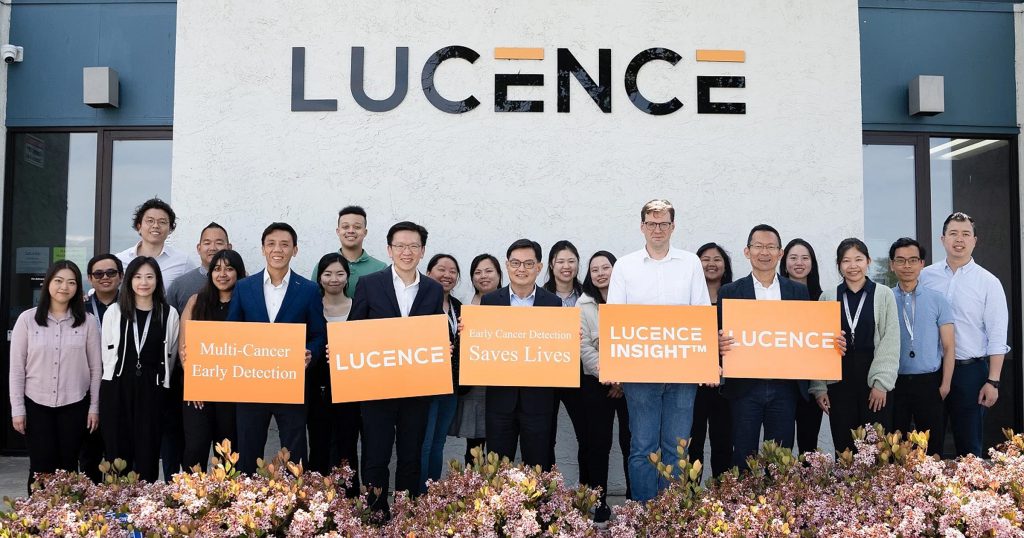
An article sponsored by EnterpriseSG in the Straits Times, published yesterday, put a much-deserved spotlight on Lucence. The Singapore startup has now morphed into a fully-fledged medical company, which has made enormous leaps in mass cancer screening, which can potentially save millions of lives.
Typically, screening for cancer can be invasive, unpleasant, impractical and still quite inaccurate. Enduring gastroscopies, colonoscopies or even mammographies may not only be uncomfortable (to say the least) but provide false positives, needlessly scaring people who are perfectly healthy.
More importantly, however, it’s difficult to test patients for many possible cancers in a short time span, not to mention all at once.
Given that many types may develop silently, without giving symptoms until it’s too late, it would be an enormous breakthrough if it was possible to conduct one simple test which could detect early signals of the disease which you may not even be aware of.
Such a breakthrough has happened in recent years, thanks in part to Lucence, a small company among medical giants, whose tests have now become products available in clinics and hospitals in Singapore, as well as in the US and other countries.
Rapid development
We covered Lucence’s earlier days here on Vulcan Post, when it raised US$20 million in Series A funding in late 2019. Soon after, the pandemic struck, and the company hit significant roadblocks given the priority given to the global fight against COVID-19, delaying the opening of its second laboratory in the US.
Nevertheless, within the next 3 years, it developed two tests LiquidHALLMARK and LucenceINSIGHT, progressively raising the number of detected cancers from around 15 to as many as 50, and bringing them to the market. It also won approval of Medicare in the USA, which is now reimbursing tests for qualifying, elderly patients covered by the federal programme.

Maverick brothers
One of the investors in Lucence is none other than Min-Liang Tan, the billionaire founder of Razer, known for the hardware company producing peripherals for PC gamers as well as gaming laptops.
It’s not a surprise that he would help the company, though, not only because it was so promising but also because it was founded by his older brother, Min-Han Tan.
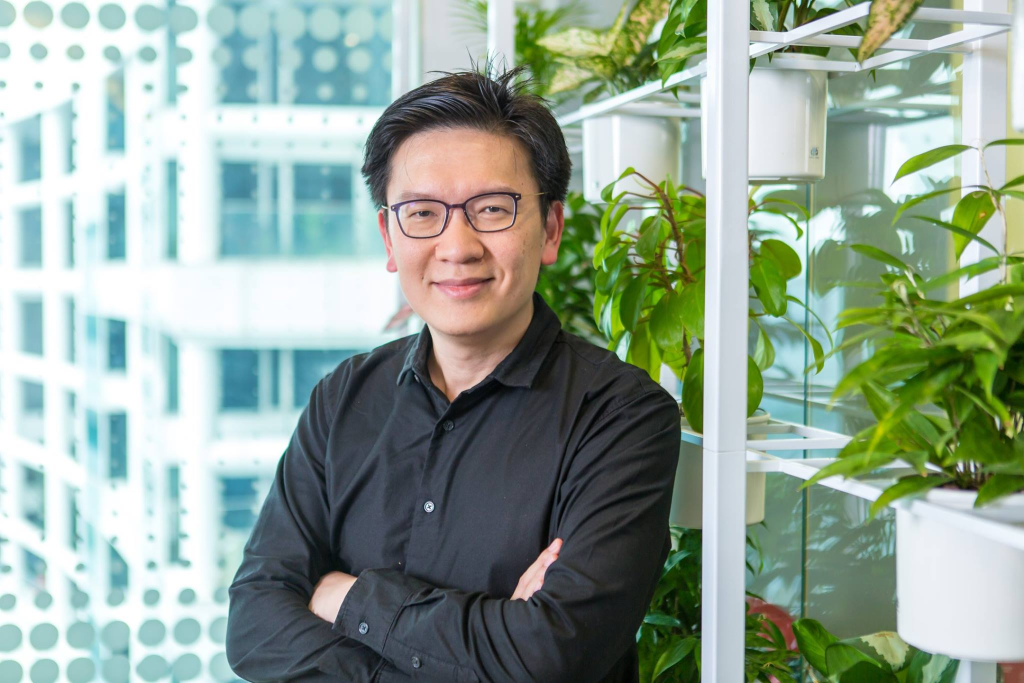
Yes, I’m sure you may want to keep this from your parents, but one brother is an IT billionaire, and the other is on a mission to save millions of lives and is already cracking a growing, multibillion-dollar cancer screening market.
Min-Liang helped introduce Lucence to his early angel investors and, according to media reports, has contributed a sizeable sum to the company himself.
To add another twist to the story, the brothers wouldn’t have predicted that their own mum would be the first patient to try Lucence’s diagnostic tests back in 2017.
She suffered from stage four metastatic colon cancer and received the LiquidHALLMARK test to see what her potential options were. The test worked but it was sadly too late for her, and she passed away by the end of the year (you can more about it in this Forbes article).
One blood sample, up to 3-week wait
While blood tests that could detect certain types of cancer markers in blood have existed for quite some time, they covered a relatively narrow group and were of limited sensitivity, as they detected proteins already produced in higher quantities by cancerous cells.
Lucence focuses on detecting DNA strands shed by cancers into the bloodstream instead, which are amplified and analysed with the help of machine learning for better detection accuracy and earlier timing.
This is why the broadest test, LucenceINSIGHT Plus, can cover as many as 50 different types.
However, it requires just a single blood sample and a 12—to 18-day wait for the results.
However, it must be said that it is not a replacement for other diagnostic tools but is primarily meant to complement them. False positives and negatives are still statistically possible, so it’s best to use a combination of screening techniques to rule out any errors.
How much does it cost? Where can you take it?
In Singapore, the test is available in multiple clinics and hospitals, so you must inquire at yours to see if it offers the service.
The out-of-pocket price for a standard LucenceINSIGHT test, which detects up to 12 cancer types, appears to currently be around S$1999 while the full LucenceINSIGHT Plus, which covers 50 types, costs S$3999.
Quite expensive, I know. However, considering how broad the test is and how many different cancers it can detect, which otherwise would require separate visits and diagnosis, it could actually be a money saver (not to mention saving your life, of course).
In addition, depending on your insurance policy and/or any memberships with healthcare providers, it may be included in a screening package you have already paid for, so you need to clarify that with them.

